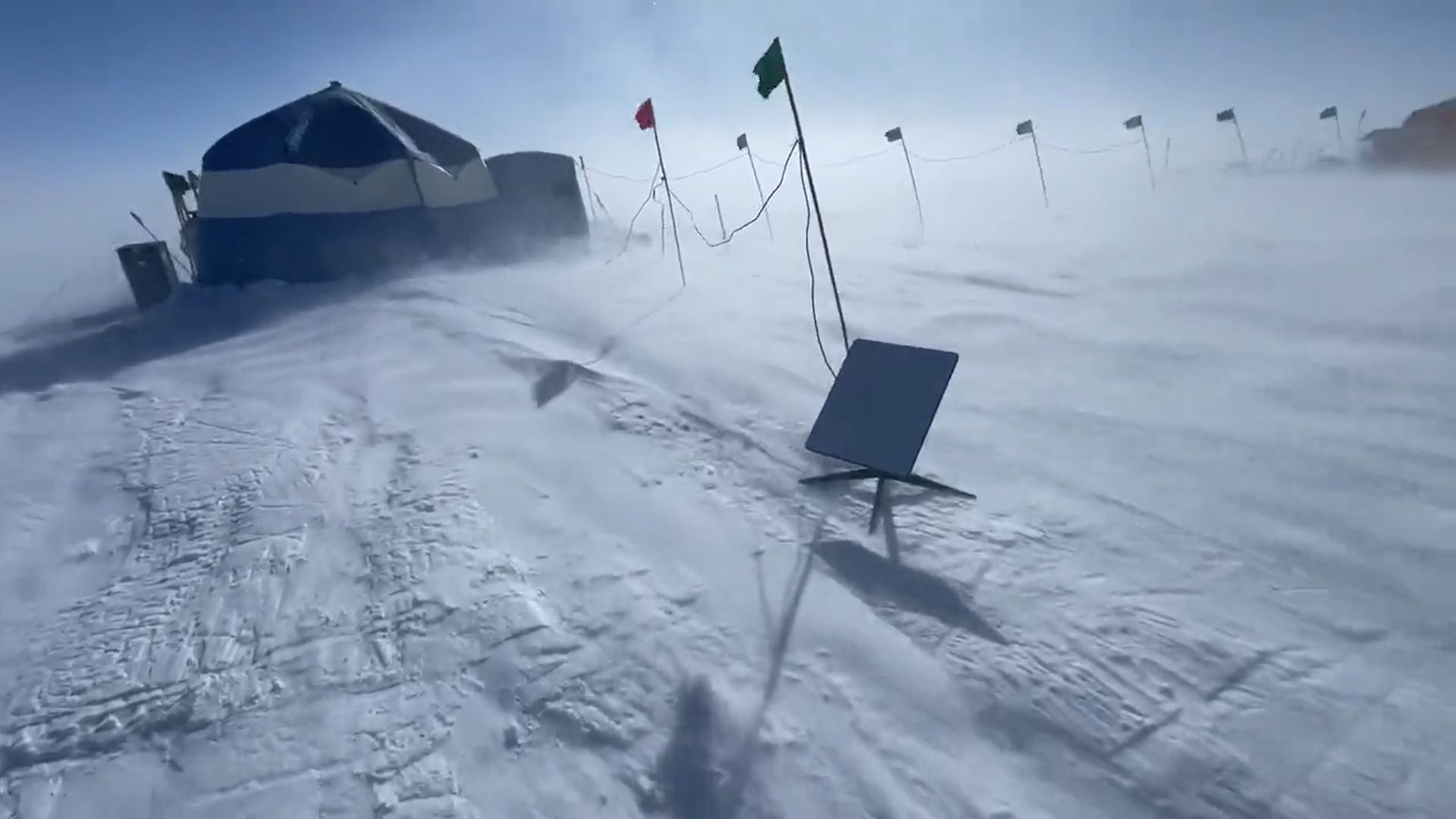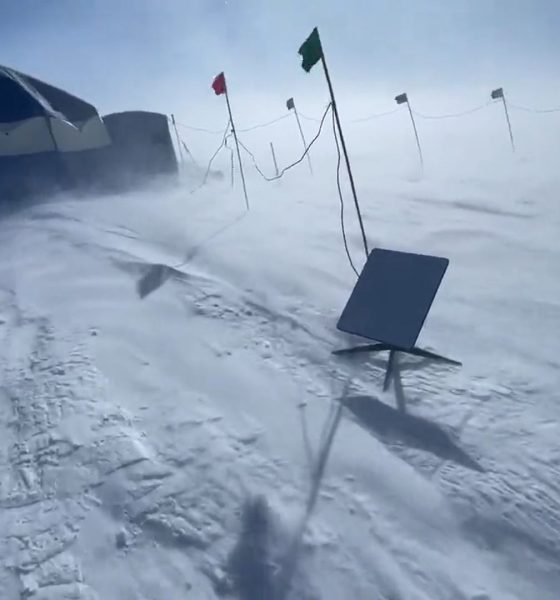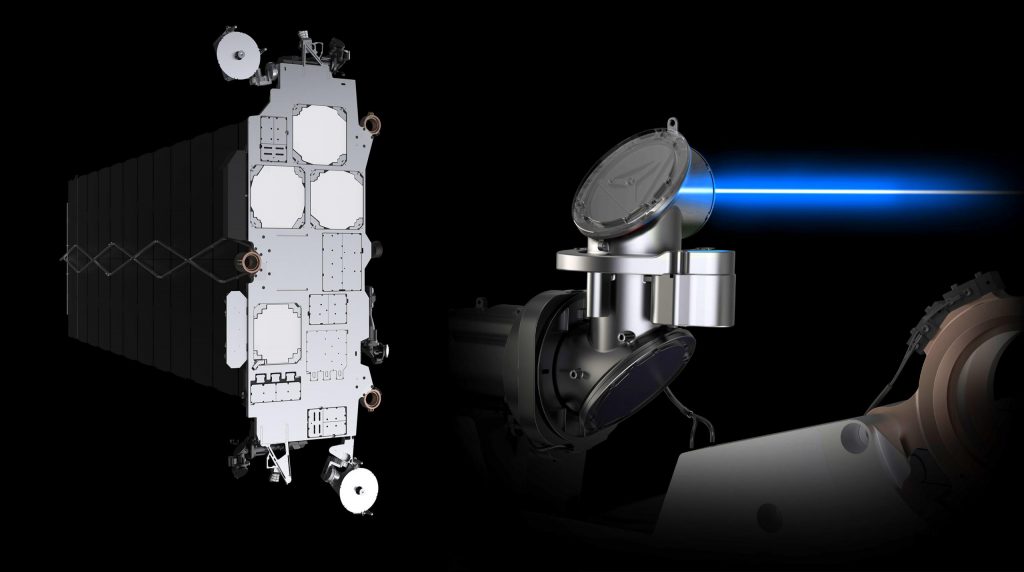

News
SpaceX Starlink satellite internet tested in the field in Antarctica
SpaceX’s Starlink internet continues to find success in Antarctica, Earth’s icy southernmost continent and has spread beyond McMurdo Station.
The company first reported that Starlink reached Antarctica as part of a National Science Foundation experiment in September 2022. The milestone also marked the satellite internet network’s arrival on all seven continents.
The update that's rolling out to the fleet makes full use of the front and rear steering travel to minimize turning circle. In this case a reduction of 1.6 feet just over the air— Wes (@wmorrill3) April 16, 2024
A series of lasers
Just ~5% of the almost 3400 working Starlink satellites currently in orbit make coverage of Antarctica (and the Arctic) possible. SpaceX currently has 181 polar-orbiting satellites in operational orbits, likely providing a decent amount of coverage in polar regions. But that’s only a third of the 520 polar satellites SpaceX’s Starlink Gen1 constellation will have once complete, meaning that coverage is likely intermittent for the time being.
Those polar satellites must also use optical interlinks (lasers) to connect Antarctic users to ground stations hundreds or thousands of miles away, as the vast and sparsely populated continent has no Starlink ground stations. Instead, users are connected to the internet via space lasers that route their communications to and from ground stations in South America, Australia, New Zealand, and other nearby locales.

Studying the oldest ice on Earth
The general purpose of the Center for Oldest Ice Exploration (COLDEX) field experiment Starlink is aiding is to find the oldest ice on Earth. That old ice allows scientists to peer back tens of thousands, hundreds of thousands, or even millions of years back into Earth’s past. Most importantly for the modern era, that ice can contain shockingly detailed information about the history of Earth’s climate.
Researchers like Dr. Neff collect ice cores by drilling miles into Antarctic ice sheets. Once removed, packaged, and carefully shipped by plane to labs around the world, the data extracted from those ice cores can tell researchers how the Earth has responded in the past to major and minor changes in climate. Knowing how it has responded and behaved before has helped scientists around the world determine with near certainty that human greenhouse gas emissions are causing average global temperatures to increase at a relatively rapid pace. Further studies, like those being done now, may help specify what kind of changes we can expect as climates warm; allowing cities, countries, and humanity as a whole to prepare for the worst while (hopefully) trying to prevent those outcomes.
COLDEX began testing Starlink in the field in early December 2022. It’s not entirely clear if that testing is still ongoing, but Dr. Peter Neff appears to be optimistic either way. In a January 21st tweet, the assistant professor and field research director said that he was excited “to see how [Starlink] & other modes of high-speed connectivity can advance [science] communication [and]…alter how we do science on the ice.”
Finding a balance
The National Science Foundation has been a part of both Antarctic Starlink experiments, thus far, and finds itself in a unique position. Through funding and other means, the government agency is aiding efforts to test the limits of the SpaceX network and discover how it can benefit science (and improve life) in some of the harshest environments on Earth. Simultaneously, NSF holds a sort of supervisory role over other aspects of SpaceX’s Starlink constellation.
For the most part, that relationship is on an even keel and SpaceX has been highly forthcoming and happy to cooperate. Even without any explicit legal requirement, SpaceX has made wide-reaching changes to its satellites and continues to experiment with ways to reduce their brightness to ground observers and limit their impact on astronomy. Nonetheless, the FCC’s decision to tie SpaceX’s next-generation Starlink Gen2 constellation license with its cooperation with the NSF has given the latter agency a bit more regulatory power than it had before.
That arguably makes the involvement of the NSF (or NSF-funded researchers) in testing Starlink’s ability to benefit science even more important. Knowing firsthand how impactful the ability to access high-bandwidth internet can be in the field and at remote camps, the NSF should be better suited to make the kind of cost-benefit analyses required to determine how much of an impact (on the night sky and astronomy) is acceptable relative to the benefits Starlink can provide.

News
Tesla FSD fleet is nearing 7 billion total miles, including 2.5 billion city miles
As can be seen on Tesla’s official FSD webpage, vehicles equipped with the system have now navigated over 6.99 billion miles.

Tesla’s Full Self-Driving (Supervised) fleet is closing in on almost 7 billion total miles driven, as per data posted by the company on its official FSD webpage.
These figures hint at the massive scale of data fueling Tesla’s rapid FSD improvements, which have been quite notable as of late.
FSD mileage milestones
As can be seen on Tesla’s official FSD webpage, vehicles equipped with the system have now navigated over 6.99 billion miles. Tesla owner and avid FSD tester Whole Mars Catalog also shared a screenshot indicating that from the nearly 7 billion miles traveled by the FSD fleet, more than 2.5 billion miles were driven inside cities.
City miles are particularly valuable for complex urban scenarios like unprotected turns, pedestrian interactions, and traffic lights. This is also the difference-maker for FSD, as only complex solutions, such as Waymo’s self-driving taxis, operate similarly on inner-city streets. And even then, incidents such as the San Francisco blackouts have proven challenging for sensor-rich vehicles like Waymos.
Tesla’s data edge
Tesla has a number of advantages in the autonomous vehicle sector, one of which is the size of its fleet and the number of vehicles training FSD on real-world roads. Tesla’s nearly 7 billion FSD miles then allow the company to roll out updates that make its vehicles behave like they are being driven by experienced drivers, even if they are operating on their own.
So notable are Tesla’s improvements to FSD that NVIDIA Director of Robotics Jim Fan, after experiencing FSD v14, noted that the system is the first AI that passes what he described as a “Physical Turing Test.”
“Despite knowing exactly how robot learning works, I still find it magical watching the steering wheel turn by itself. First it feels surreal, next it becomes routine. Then, like the smartphone, taking it away actively hurts. This is how humanity gets rewired and glued to god-like technologies,” Fan wrote in a post on X.
News
Tesla starts showing how FSD will change lives in Europe
Local officials tested the system on narrow country roads and were impressed by FSD’s smooth, human-like driving, with some calling the service a game-changer for everyday life in areas that are far from urban centers.

Tesla has launched Europe’s first public shuttle service using Full Self-Driving (Supervised) in the rural Eifelkreis Bitburg-Prüm region of Germany, demonstrating how the technology can restore independence and mobility for people who struggle with limited transport options.
Local officials tested the system on narrow country roads and were impressed by FSD’s smooth, human-like driving, with some calling the service a game-changer for everyday life in areas that are far from urban centers.
Officials see real impact on rural residents
Arzfeld Mayor Johannes Kuhl and District Administrator Andreas Kruppert personally tested the Tesla shuttle service. This allowed them to see just how well FSD navigated winding lanes and rural roads confidently. Kruppert said, “Autonomous driving sounds like science fiction to many, but we simply see here that it works totally well in rural regions too.” Kuhl, for his part, also noted that FSD “feels like a very experienced driver.”
The pilot complements the area’s “Citizen Bus” program, which provides on-demand rides for elderly residents who can no longer drive themselves. Tesla Europe shared a video of a demonstration of the service, highlighting how FSD gives people their freedom back, even in places where public transport is not as prevalent.
What the Ministry for Economic Affairs and Transport says
Rhineland-Palatinate’s Minister Daniela Schmitt supported the project, praising the collaboration that made this “first of its kind in Europe” possible. As per the ministry, the rural rollout for the service shows FSD’s potential beyond major cities, and it delivers tangible benefits like grocery runs, doctor visits, and social connections for isolated residents.
“Reliable and flexible mobility is especially vital in rural areas. With the launch of a shuttle service using self-driving vehicles (FSD supervised) by Tesla in the Eifelkreis Bitburg-Prüm, an innovative pilot project is now getting underway that complements local community bus services. It is the first project of its kind in Europe.
“The result is a real gain for rural mobility: greater accessibility, more flexibility and tangible benefits for everyday life. A strong signal for innovation, cooperation and future-oriented mobility beyond urban centers,” the ministry wrote in a LinkedIn post.
News
Tesla China quietly posts Robotaxi-related job listing
Tesla China is currently seeking a Low Voltage Electrical Engineer to work on circuit board design for the company’s autonomous vehicles.

Tesla has posted a new job listing in Shanghai explicitly tied to its Robotaxi program, fueling speculation that the company is preparing to launch its dedicated autonomous ride-hailing service in China.
As noted in the listing, Tesla China is currently seeking a Low Voltage Electrical Engineer to work on circuit board design for the company’s autonomous vehicles.
Robotaxi-specific role
The listing, which was shared on social media platform X by industry watcher @tslaming, suggested that Tesla China is looking to fill the role urgently. The job listing itself specifically mentions that the person hired for the role will be working on the Low Voltage Hardware team, which would design the circuit boards that would serve as the nervous system of the Robotaxi.
Key tasks for the role, as indicated in the job listing, include collaboration with PCB layout, firmware, mechanical, program management, and validation teams, among other responsibilities. The role is based in Shanghai.
China Robotaxi launch
China represents a massive potential market for robotaxis, with its dense urban centers and supportive policies in select cities. Tesla has limited permission to roll out FSD in the country, though despite this, its vehicles have been hailed as among the best in the market when it comes to autonomous features. So far, at least, it appears that China supports Tesla’s FSD and Robotaxi rollout.
This was hinted at in November, when Tesla brought the Cybercab to the 8th China International Import Expo (CIIE) in Shanghai, marking the first time that the autonomous two-seater was brought to the Asia-Pacific region. The vehicle, despite not having a release date in China, received a significant amount of interest among the event’s attendees.








